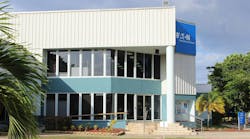In what may be one of the more interesting acquisitions in the lighting business this season, Cree Inc., Durham, N.C., announced that it's acquiring privately held lighting fixture manufacturer Ruud Lighting, Racine, Wis., for a net outlay worth approximately $525 million in combined cash and stock.
Ruud will stay in Racine as a division of Cree Lighting and company founder, chairman and CEO Alan Ruud will take a seat on Cree's board. His son, Chris Ruud, will continue as president of Ruud Lighting.
While many electrical distributors know Ruud Lighting for the direct-only sales strategy it has used to sell traditional lighting fixtures since 1982, in a transcription of a conference call with analysts posted on www.seekingalpha.com, Chuck Swoboda, Cree's CEO, said that in the LED world, Ruud Lighting sells its BetaLED product line through independent reps. “We see is an opportunity that's between the Cree product line and the BetaLED LED product line,” he said. “We can now give those reps and agents an even broader offering to really move the market and drive adoption.”
Cree sells its LED lighting products through a mix of marketing channels that includes electrical and electronics distributors and lighting reps. Michelle Murray, Cree's head of corporate communications, said in an e-mail, “At this time we are not changing the go-to-market strategies for any of the Ruud products or Cree fixtures. Our distributors, reps and agents for lighting products are different than those for LED components, as you would expect.”
The company sells its LED fixture packages through electrical distributors and sells its LED components through electronics distributors such as Newark and Arrow Electronics. The EcoSmart LED Downlight sold by Home Depot for the past year uses Cree LEDs.
Swoboda said in that conference call with analysts that one of the reasons Cree and Ruud are such a good match is the LED R&D that Ruud has done through its BetaLED business, which it launched in 1992 and has built up in local markets through its network of lighting reps.
“Over the last five years, Ruud Lighting has transformed into a true LED company and established their BetaLED product line as a market leader in LED outdoor lighting,” he said. “The company has grown to over $200 million, with more than 60 percent of their sales in LED-based products and more than 4,000 installations in over 1,000 cities. They have established a solid channel for the BetaLED business and also have strong direct-to-customer and direct-to-contractor channels with their Ruud Lighting and E-conolight brands.
“There is probably no better example than the city of Los Angeles project. The BetaLED LEDWay product helped enable the largest LED lighting retrofit undertaken to date. The city is replacing 140,000 streetlights with LED streetlights and estimates that they will save $10 million per year with a payback of 6 years or less and 55% energy savings.”
Alan Ruud is known in the lighting community as one of the most successful entrepreneurs in the field. He founded Ruud Lighting in 1982, first building prototype products in his garage. The company was unique right from the start in that it sold directly to electrical contractors and promoted its products heavily and regularly at trade shows and through trade magazine advertising.
Ruud sold Ruud Lighting to publicly-held Advanced Lighting Technologies Inc. (ADLT) in 1998, but bought it back in 2001 when ADLT ran into financial difficulties. Cree reported in its 2010 10-K that its annual revenues for its fiscal year ending June 26 increased 14 percent to $987.6 million. Despite this sales growth and a healthy gross margin of 44 percent (down three percent from fiscal 2009), its net income declined to $146.5 million in 2010 and its stock price is currently down approximately 57 percent over the past 52 weeks to about $31 per share at press-time.








